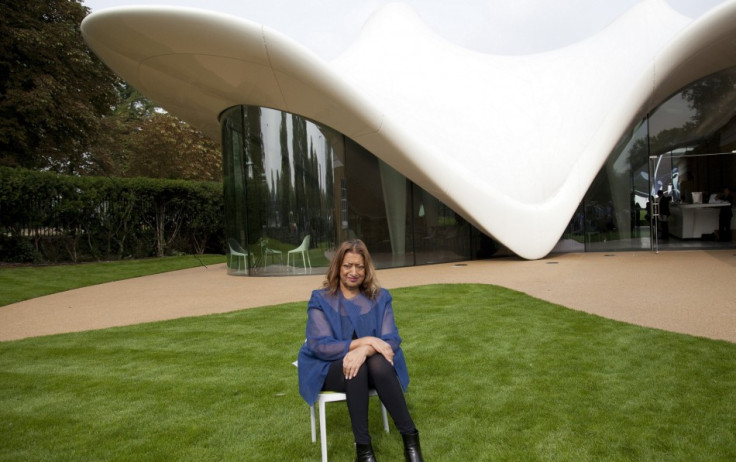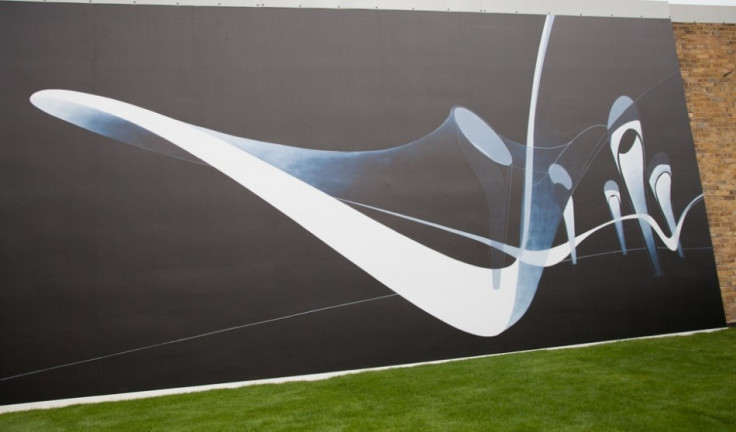Zaha Hadid's Serpentine Sackler Gallery Jellyfish Building Would Conquer Napoleon
Iraqi-born British architect's first permanent structure in adopted city of London restores and extends 200-year-old arms depot to public use.

Pritzker Architecture Prize laureate Zaha Hadid could not have chosen her first permanent London structure with better precision for her explosive debut in the capital - a building attached to a former gunpowder store built in 1805 to repel the advance of Napoloen. In the end, it was never needed as Nelson defeated his French adversary in the Battle of Trafalgar and the ammunition store, known as the Magazine, became surplus to requirements. For 200 years, it has been a presence in the park but never one that has had public use.
Until now. With the opening on Saturday (28 September) of the £14.5m Serpentine Sackler Gallery, an annexe to the radical exhibition space in Kensington Gardens, Hadid's arrival in the capital has been heralded with a bang.
But why has that arrival taken so long? The Iraqi-born British architect recognised in 2012 in the Queen's Birthday Honours List with a damehood for services to architectutre shrugs her shoulders.
"Ask the powers that be," she tells IBTimes UK outside the neo-classical building.
The world-renowned architect has garnered praise for some of the most iconic buildings dotted around the globe - but has never been asked to design a permanent public structure in her adopted city of London. The aquatics centre she designed for the London 2012 Olympic games was a temporary structure.
The Sackler, which resembles a giant jellyfish, started life as a draft sketch taken from Hadid's own fertile imagination. The Serpentine Gallery and its powerful patrons launched a last-minute battle to win a keenly contested tender from the Royal Parks to return the Magazine, a Grade II-listed building, to public use for the first time in its 208-year history.
Lord Palumbo, chair of the Serpentine Gallery board, recollects Hadid's pivotal role in swinging approval for the development in their favour.
"Zaha came to the rescue," he says. "Zaha spoke to the agents acting on behalf of the Royal Parks. They gave her sufficient information from their memory of the building to enable her to produce this concept, which of course immediately put us head and shoulders above everybody else. That was a great moment."

Hadid, 63, describes the building and her undulating extension as "marrying the old with the new".
She explains: "We began to look at the shell structure, topography and how we can attach a structure to this building which is contrasting and sensitive."
With 900 square metres of new gallery, restaurant and social space, the Serpentine's second space in Kensington Gardens has become London's newest cultural destination with a view to die for.
The opening of the Serpentine Sackler Gallery also marks another milestone for the internationally acclaimed arts organisation, which has championed new ideas in contemporary arts and installations since it opened in 1970. The gallery has showcased pioneering exhibitions of 1,600 artists over 43 years - from the work of emerging artists to internationally acclaimed ones such as Louise Bourgeois, Frank Gehry, Damien Hirst, Jeff Koons, Gerhard Richter, Yoko Ono, Andy Warhol and Ai Weiwei.
The gallery, already famous for its annual Serpentine Pavilion where works of renowned architects are brought to life through the commission of a temporary structure, has given London another wonder to behold. For a city already gaining a reputation for its eye-catching buildings, from the Gherkin and Walkie-Talkie to The Shard and the Cheese Grater, now add the "Jellyfish" by Zaha Hadid.
© Copyright IBTimes 2025. All rights reserved.






















